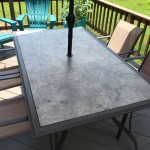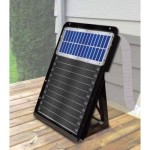Garden Plans For Decks And Patios: Cultivating Green Spaces in Limited Areas
Decks and patios offer valuable outdoor living spaces, extending the home's footprint and providing areas for relaxation, entertainment, and connection with nature. These spaces, however, often lack the natural element of a traditional garden. Strategic planning and plant selection can transform a deck or patio into a thriving garden haven, maximizing aesthetic appeal and functionality.
The design process for a deck or patio garden requires careful consideration of several factors, including spatial limitations, environmental conditions (sun exposure, wind, drainage), weight constraints, and personal preferences. A well-executed garden plan addresses these challenges, creating a sustainable and visually pleasing outdoor environment.
Assessing the Existing Space and Environmental Conditions
Before selecting plants and containers, a thorough assessment of the deck or patio's existing conditions is crucial. This involves evaluating the structural integrity of the deck to ensure it can support the added weight of soil, containers, and plants, especially when saturated with water. Consult with a structural engineer if there are any concerns about weight bearing capacity, particularly for older decks or those constructed with lighter materials.
Sunlight exposure is a primary factor influencing plant selection. Observe the area throughout the day to determine the number of hours of direct sunlight the space receives. This information will dictate the types of plants that will thrive. Areas with full sun (6+ hours of direct sunlight) can accommodate sun-loving plants like herbs, vegetables, and certain flowering annuals and perennials. Partially shaded areas (3-6 hours of direct sunlight) are suitable for plants requiring less intense sun exposure, such as hostas, ferns, and impatiens. Areas with mostly shade (less than 3 hours of direct sunlight) can support shade-tolerant plants like begonias, caladiums, and some varieties of trailing plants.
Wind exposure should also be considered, particularly on elevated decks or patios located in exposed areas. Strong winds can desiccate plants and damage delicate foliage. Windbreaks, such as trellises with climbing plants or strategically placed shrubs in heavy containers, may be necessary to shelter more vulnerable plants. Ensure that any windbreaks are securely anchored to prevent them from being toppled by strong gusts.
Drainage is another critical element. Decks and patios typically have impervious surfaces, so proper drainage within containers is essential to prevent waterlogging and root rot. Ensure that all containers have drainage holes and consider using a layer of gravel or pebbles at the bottom to improve drainage. For larger containers, consider using a lightweight potting mix to reduce the overall weight.
Selecting Plants and Containers Suitable for Deck and Patio Gardens
The selection of plants and containers is a critical component of the garden plan. Choosing plants that are well-suited to the specific environmental conditions and spatial limitations of the deck or patio will contribute significantly to the garden's success. Consider the mature size of plants to avoid overcrowding and maintain adequate space for airflow.
Containers come in a wide variety of materials, sizes, and styles. The choice of container should complement the overall aesthetic of the deck or patio while also providing adequate space for root development. Terracotta pots are a classic choice, but they can be heavy and dry out quickly. Plastic pots are lightweight and retain moisture well, but they may not be as aesthetically pleasing. Fiberglass and resin containers offer a good balance of durability, weight, and appearance. Consider using self-watering containers to reduce the frequency of watering, especially in hot or dry climates.
Vertical gardening techniques can maximize space in small areas. Wall-mounted planters, hanging baskets, and trellises with climbing plants can add visual interest and create a sense of depth. Consider growing herbs or vegetables vertically to save space and create an edible garden.
Plant selection should also consider factors such as bloom time, color, and fragrance. Choose plants with staggered bloom times to ensure continuous color throughout the growing season. Consider incorporating plants with fragrant foliage or flowers to enhance the sensory experience of the garden. Plants that attract pollinators, such as bees and butterflies, can add to the garden's ecological value.
Dwarf varieties of trees and shrubs are well-suited for container gardening on decks and patios. These plants provide structure and visual interest without overwhelming the space. Consider using evergreen shrubs to provide year-round greenery. Deciduous trees and shrubs can add seasonal color and interest, but be mindful of leaf drop and potential mess.
Designing for Functionality and Aesthetics
A well-designed deck or patio garden considers both functionality and aesthetics. The garden should not only be visually appealing but also serve a purpose, such as providing shade, privacy, or a space for entertaining. Consider the overall style of the home and choose plants and containers that complement its architecture and décor.
Creating distinct zones within the garden can enhance its functionality. A dining area can be defined by a pergola with climbing vines, providing shade and a sense of enclosure. A relaxation zone can be created with comfortable seating surrounded by lush foliage and fragrant flowers. A cooking zone can feature a herb garden and a small grill.
Lighting plays a crucial role in extending the enjoyment of the deck or patio garden into the evening. String lights, spotlights, and lanterns can create a warm and inviting atmosphere. Consider using solar-powered lights to reduce energy consumption. Uplighting trees or shrubs can highlight their form and texture, adding visual interest.
Pathways can be incorporated into the garden design to provide access to different areas. Use pavers, gravel, or stepping stones to create a defined path. Ensure that pathways are wide enough to accommodate foot traffic and are well-lit for safety.
Water features, such as fountains or small ponds, can add a soothing element to the garden. The sound of water can mask ambient noise and create a more peaceful atmosphere. Consider using a container water garden to minimize space requirements. Ensure that water features are properly maintained to prevent mosquito breeding.
Regular maintenance is essential to keep the deck or patio garden looking its best. Water plants regularly, fertilize as needed, and prune to maintain their shape and size. Remove dead or diseased foliage promptly to prevent the spread of disease. Check plants regularly for pests and diseases and take appropriate action to control them.
By carefully considering these aspects, it is possible to create a vibrant and enjoyable garden space on decks and patios, increasing the value and usability of the outdoor living area.

Garden Plans Decks Patios Gate

Deck Ideas 40 Ways To Design A Great Backyard Or Patio Sunset

Deck Ideas 40 Ways To Design A Great Backyard Or Patio Sunset

Garden Plans Decks Patios Gate

11 Deck Patio Landscaping Ideas Decks Com

15 Gorgeous Deck And Patio Ideas You Can Diy Family Handyman

Garden Designs With Pergola Incorporated Silverbirch Gardens

The Best Budget Friendly Backyard Deck Ideas Tilly Design

15 Dazzling Hardwood Deck Design Ideas For Gardeners

55 Ideas For Landscaping Around A Deck Or Patio
Related Posts








